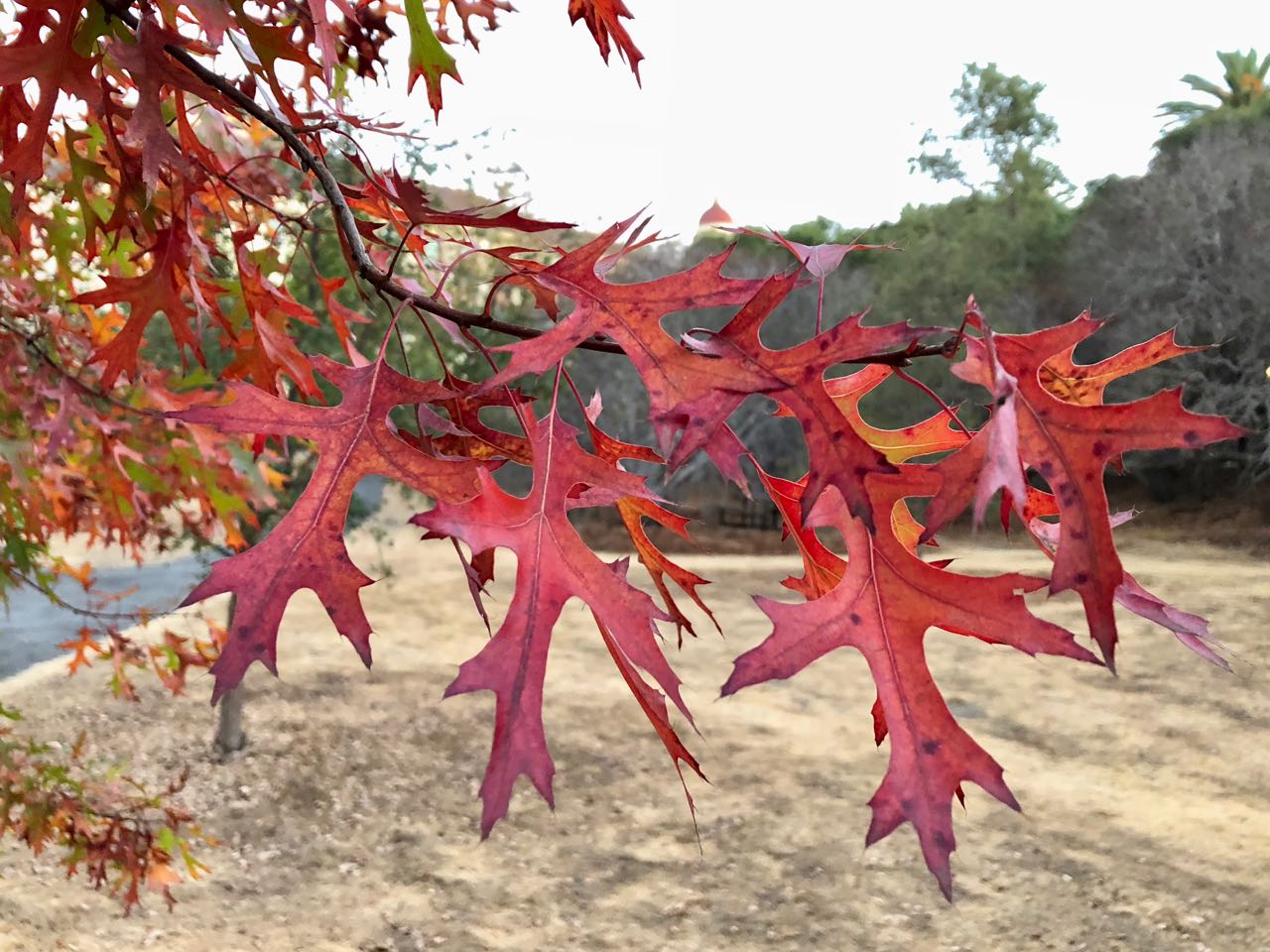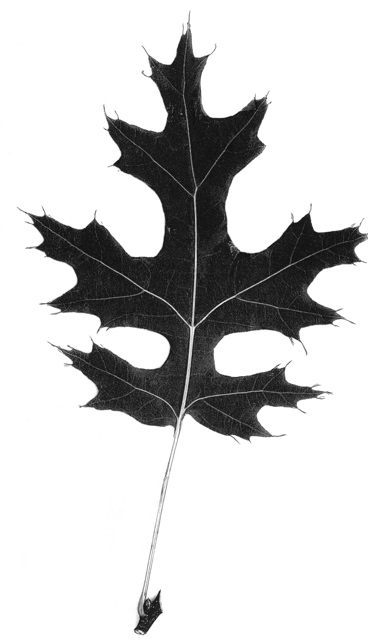Quercus coccinea
 scarlet oak
scarlet oak
A deciduous tree with deeply seven-lobed leaves 3 to 6 inches long, each lobe having several sharp points where the veins continue out into space in the form of bristles. The acorn is ½ to ¾ inch long and a good half is contained by the cup. The attractive leaf shape combined with the clear green light that filters through the tree in summer makes this a very pleasing tree. In addition it provides a spectacle in fall. Q. coccinea resembles Q. palustris in youth but outgrows the pyramidal shape of pin oak, becoming more rounded. Leaves are similar, but larger; scarlet oak lacks the numerous short “pin” side shoots of its relative. Q. coccinea also resembles Q. rubra but the red oak has larger leaves with more lobes. Acorns and technical manuals help with identification.
See mature scarlet oaks on the east side of Murray House along Governor’s Avenue. Two youngsters flanking the path just west of the Stanford Wall sculpture in the east ear of the Oval (map pin) were removed six or so years later. In Palo Alto, the scarlet oak at the edge of the park next to the College Terrace Library on Wellesley Street was full of mistletoe in 2004; another Q. coccinea is at 1610 Portola Avenue.
Notes
Ingrid Graeve wrote:
Herb Fong said it’s difficult to tell pin from scarlet oaks. The 2 staked trees on the west side of Branner are the newly planted Q coccinea. I don’t remember exactly if they keep their leaves in winter, but I think they do. Two trees died at Branner as a result of the construction project there, and Grounds was asked to replace them in March. We had to take out the dead trees, and we joked that it would be hard to tell which ones were dead, since they all retain brown leaves. I just talked to one of our supervisors, Bob Murphy, who tells me the following: Q coccinea definitely retains its dead leaves in winter. It has upward reaching branches and a fuller top, so it looks more square overall. Q. palustris here sometimes retains its dead leaves. Often the lower leaves are retained but the upper ones are blown off by the wind. The shape of Q palustris is thinner (more pin-like), with downward reaching branches, overall more pyramidal. Q. palustris is very susceptible to manganese deficiency, and the pair at the south end of Lomita Mall sometimes show this.
Doug Goldman, Harvard University Herbaria, wrote 22 June 2009:
I suspect that you may have other hybrids there [on campus] too, from what you said. I’ve seen cultivated trees of things that may be Q. coccinea x rubra, and behind the herbarium here at Harvard there is a tree that is probably Q. coccinea x Q. palustris. Quercus palustris x Q. rubra often occur where both species grow together, and it is possible that you have some Q. shumardii there misidentified as Q. rubra or Q. coccinea. They can be challenging to deal with. Oaks generally are not self-pollinating, so acorns from a tree may turn out to be hybrids even if they were collected from a pure stand of one parent. The trees you speak of at Stanford could have come from seed from areas of hybridization, or even come from misidentifed material from botanical gardens. I see this sort of thing a lot.
About this Entry: The main text of this entry is from the book Trees of Stanford and Environs, by Ronald Bracewell, published 2005. John Rawlings subsequently added the quoted notes. Oval ear locations added (Oct 2018, SP), noted as removed (Oct 2024, SP).





